Bathurst was the entry point for this local legend
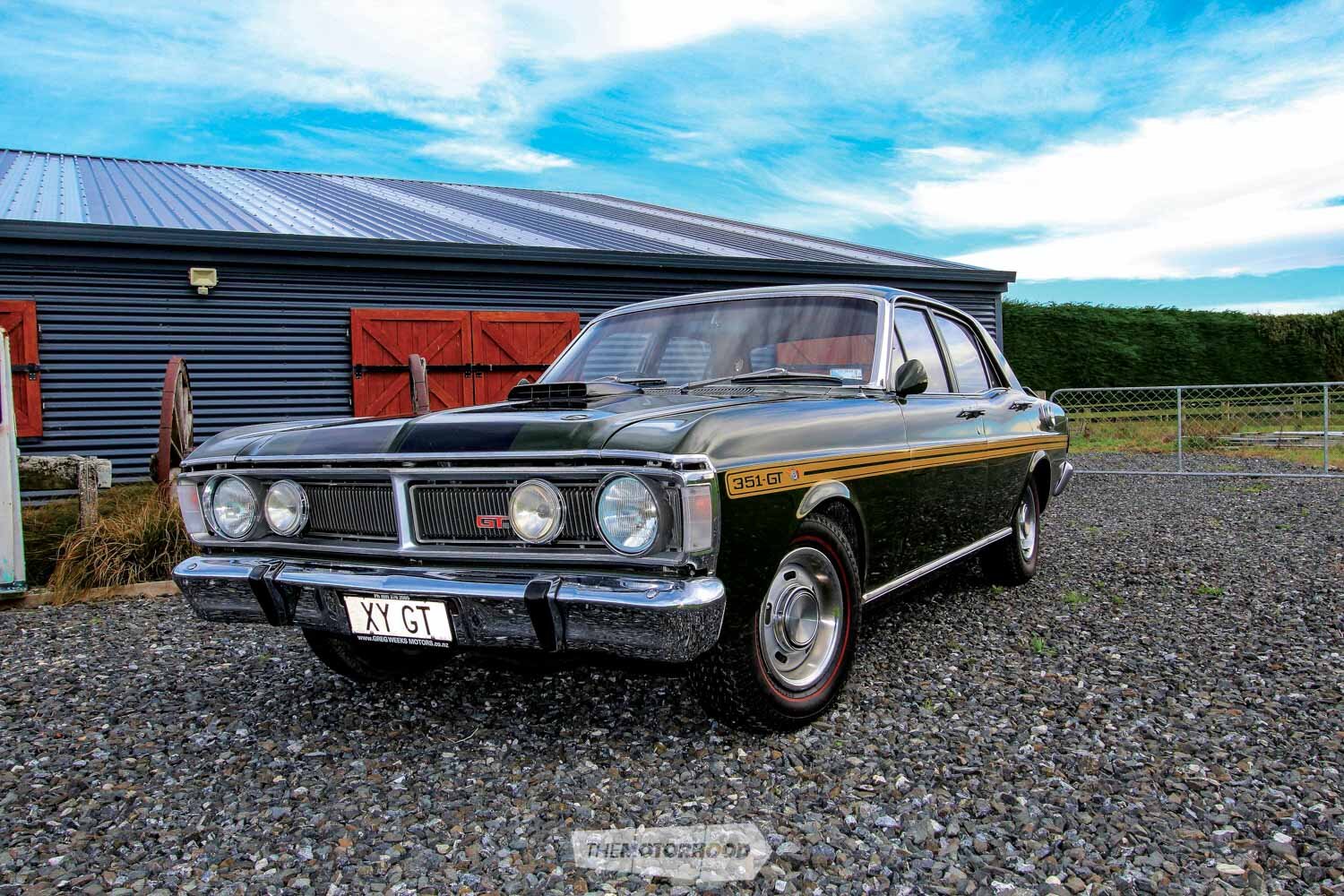
When the Australian motor industry was entering its golden era, one car set the benchmark. Ford’s Falcon GTHO and its various GT derivatives, especially in Phase III form, dominated at Bathurst from 1967–1972.
Harry Firth masterminded the Ford race programme for the GTs and, with
co-driver Fred Gibson, secured the car’s win at Bathurst in 1967. Holden had nothing that could compete with the GTs until the Holden Dealer Team Monaros were created. It was the beginning of a glorious period of competition when success at Mount Panorama equated to success in the market for Ford, Holden, and Chrysler.
In other major events, such as the 1968 London–Sydney Marathon, Ford Falcon GTs acquitted themselves well, despite a win to a small Hillman Hunter driven by Scot Andrew Cowan.
HEADING THE FORD TEAM
In his book, Climbing the Mountain, Allan Moffat says the Ford Falcon GTHO would be remembered as the greatest muscle car ever built in Australia, and “the first and last of the supercars”.
It could have even been even greater as a Phase IV version was ready for 1972, but public outcry over road-registerable race cars put paid to those plans, and signalled the end of Ford’s direct involvement in Australian touring car racing.
When we contacted Allan Moffat recently, he noted how much driver safety has changed.
“Cars from that era until now have changed quite substantially in safety, going from showroom-floor cars to purpose-built race cars.”
Moffat’s association with Ford started back in the 1960s. Racing a Ford Lotus Cortina in the United States was especially important to his career from 1965 to 1989, which eventually resulted in 13 titles in different makes of cars. They included Australian Sports Sedan, Australian Endurance, FIA Touring Cars, and World Touring Cars championships, often in a Ford Falcon until his last race in the model at Bathurst in 1980 in an XD Falcon. At one time, he also teamed up with good mate Peter Brock in a Holden Commodore for Bathurst, and in 1981, stunned his fans with a very successful stint in a Mazda RX7, the little car taking victories in the 1982 and 1984 Australian Endurance Championships.
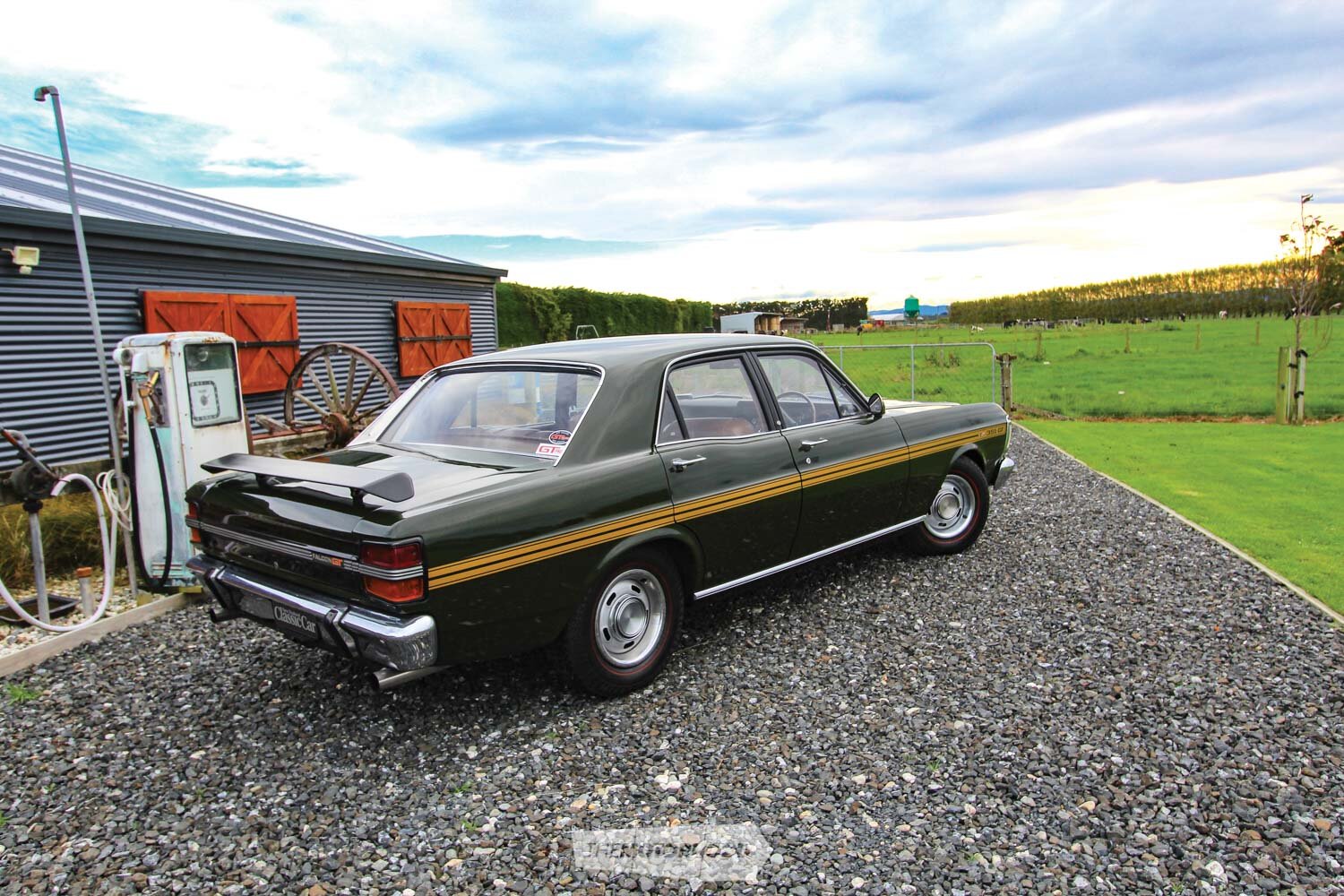
A HANDS-ON TEAM MANAGER
Al Turner arrived from the US to head Ford’s race programme, and things started to move pretty quickly for Moffat. Turner was well aware of Moffat’s reputation for developing cars in testing and his sympathetic touch on the racetrack. In 1969, after Holden launched the Monaro with a 350ci V8, Ford sprang the HO model on the market: a purpose-built race car with “handling options”, as Al Turner explained to the press.
“Ford’s race program was very important to my career, as it gave me some pretty good cars to drive in all races of that era,” Allan said.
In 1969, most cars used radial tyres for motor racing, which were not ideal for reliability and top performance. Using Turner and Moffat’s previous association with Goodyear, they decided to bring in a container of their race tyres for the Fords.
During the race, it was discovered that if drivers were harder on their tyres, they made contact with the Ford’s upper ball-joints with disastrous results. The race was memorable for Bill Brown’s spectacular barrel roll approaching a Skyline in his Phase II, when a front right tyre blew. Miraculously, Brown was only shaken and bruised.
At this point in the race, Moffat had experienced a minor gearbox problem and had pulled over to rectify it. He subsequently avoided the huge pileup with competitor’s cars when suddenly confronting Brown’s overturned Ford.
With Moffat sitting in a comfortable position for a win, Turner then made a critical decision.
“I was relatively easy on the car, and that was shown in the 1969 Bathurst when the other works cars were running out of tyres, but I was called in by Al Turner with only laps to go.”
Moffat was very aware that his tyres were fine but followed team orders, despite the frustration of being so close.
We found out that mine were still in good condition… One that got away!”
He placed fourth.

PHASE II
Fred Gibson tested the 1970 Phase II cars extensively at Ford’s You Yangs Proving Grounds with Moffat also doing some testing to improve the cars. Results were fed back to a special facility, Lot 6, opposite the Ford plant at Broadmeadows. Just like Nascar, aerodynamics were being experimented with.
“Lot 6 was the original skunk works. Testing was always paramount for success, and the more you did, the better you became. Peter Thorn developed a front spoiler on a test car we had and it worked great.”
The Phase II also saw a change from the Windsor block 351ci engine to a 351ci Cleveland block for greater reliability. However, they were not easy cars to drive Moffat explained, having to be revved harder to get the performance out of them and consequently reliability issues surfaced.
“They didn’t seem to have as much torque as a Windsor, and the car took a little longer to get in touch with. I know Fred [Gibson] loved the Phase I better.”
Ford were considering replacing the
Phase I with the American-sourced Torino, but fortunately that never eventuated.
“The Falcon was a born-and-bred Aussie car and well-balanced in both sedan and the later coupe, something we were familiar with.”
SUPER FALCONS
In 1970, Al Turner supervised the building of two Super Falcons using the XW GTHO Phase II as the basis, but using technology from the Mustang 302 Boss program. A fuel-injected Cleveland 351 was used, putting out 447kW (600bhp). Those who drove them, including Allan Moffat, found it simply too powerful for the flexible chassis to handle, and the project was abandoned for 1971 and 1972 in favour of the XY body.
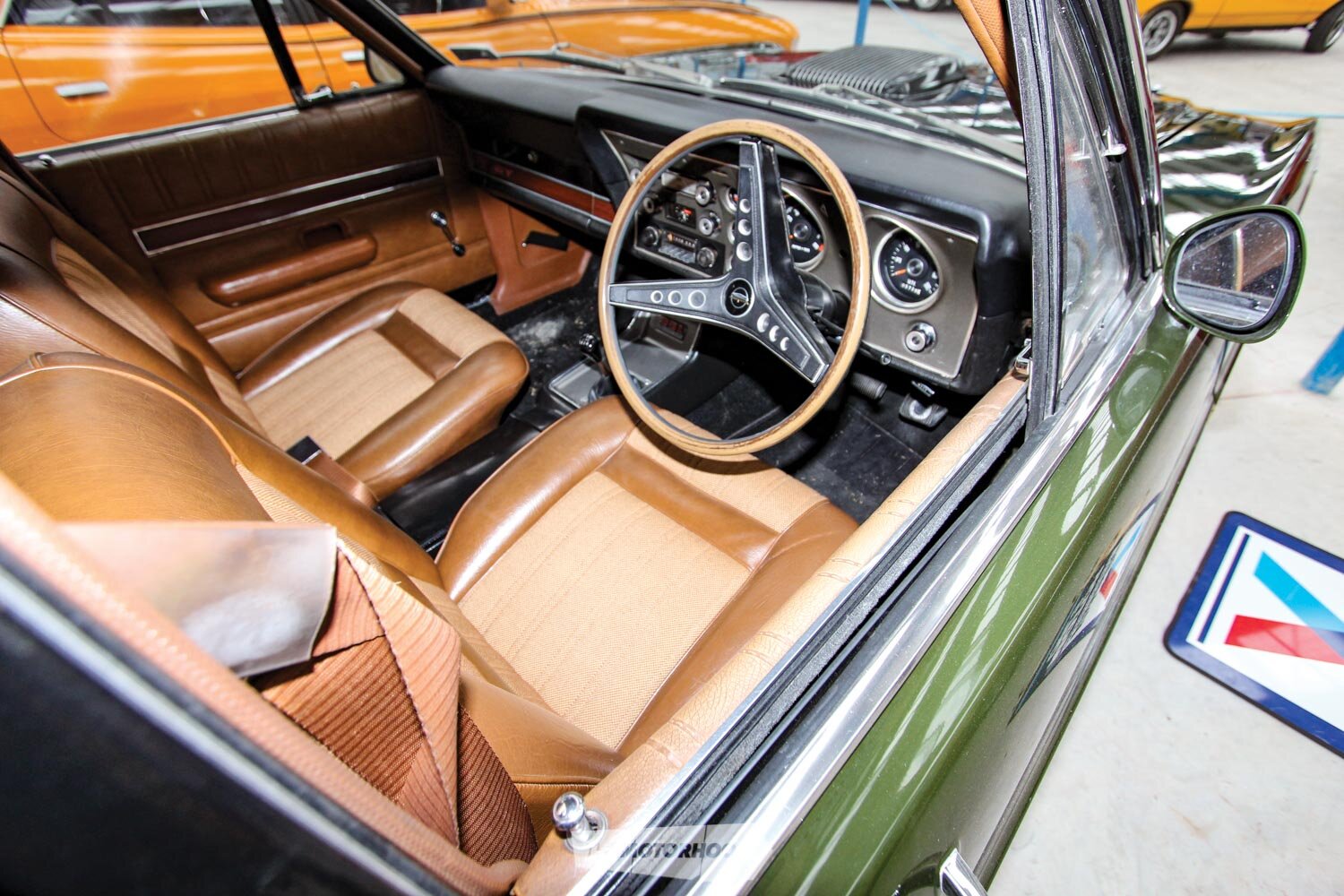
CHANGING OF THE GUARD, PHASE III
Al Turner’s departure heralded the arrival of Howard Marsden, a team manager Moffat had come into contact with when the former had managed Alan Mann Ford race teams.
“Two totally different guys; Al from a drag racing background, where Howard was wanting a complete handling package.”
He built a sensational Phase III.
Journalist Mel Nichols of Sports Car World called the Phase III “simply one of the best cars in the world, a true GT that can take on Ferraris and Astons on their own terms … a classic car worth buying to keep a lifetime.”
The public thought so too, but with just 300 Phase III GTHOs built, they were soon snapped up at a bargain AUD$5250.
Moffat’s most memorable drives were in the Phase III GTHOs in 1971, when he led from start to finish at Bathurst, 13 seconds faster than his record lap in 1970. Moffat dominated the Hardie-Ferodo 500 race, taking pole, and won by a lap over John French in a similar car. There were five Phase III GTHOs in the top six positions at flagfall, with Leo Geoghegan in a Chrysler Charger seventh.
“The Phase III had great power and handling and I felt comfortable in it.”
Incredibly, Brown again rolled his GTHO entering McPhillamy Park, breaking the car in two, yet was again unscathed.
It was 1969 all over again — Marsden directing him to pit with a beer carton jammed in the Ford’s front grille.
“Again, team orders. I still wasn’t really happy as I could see the gauges and they were all reading fine.”
Engine temperatures were where they should be, and all was well, so he continued.
His signal of a single raised digit to the pits was later explained as an intention to win by one lap ahead of second-place-getter John French, which he duly did.
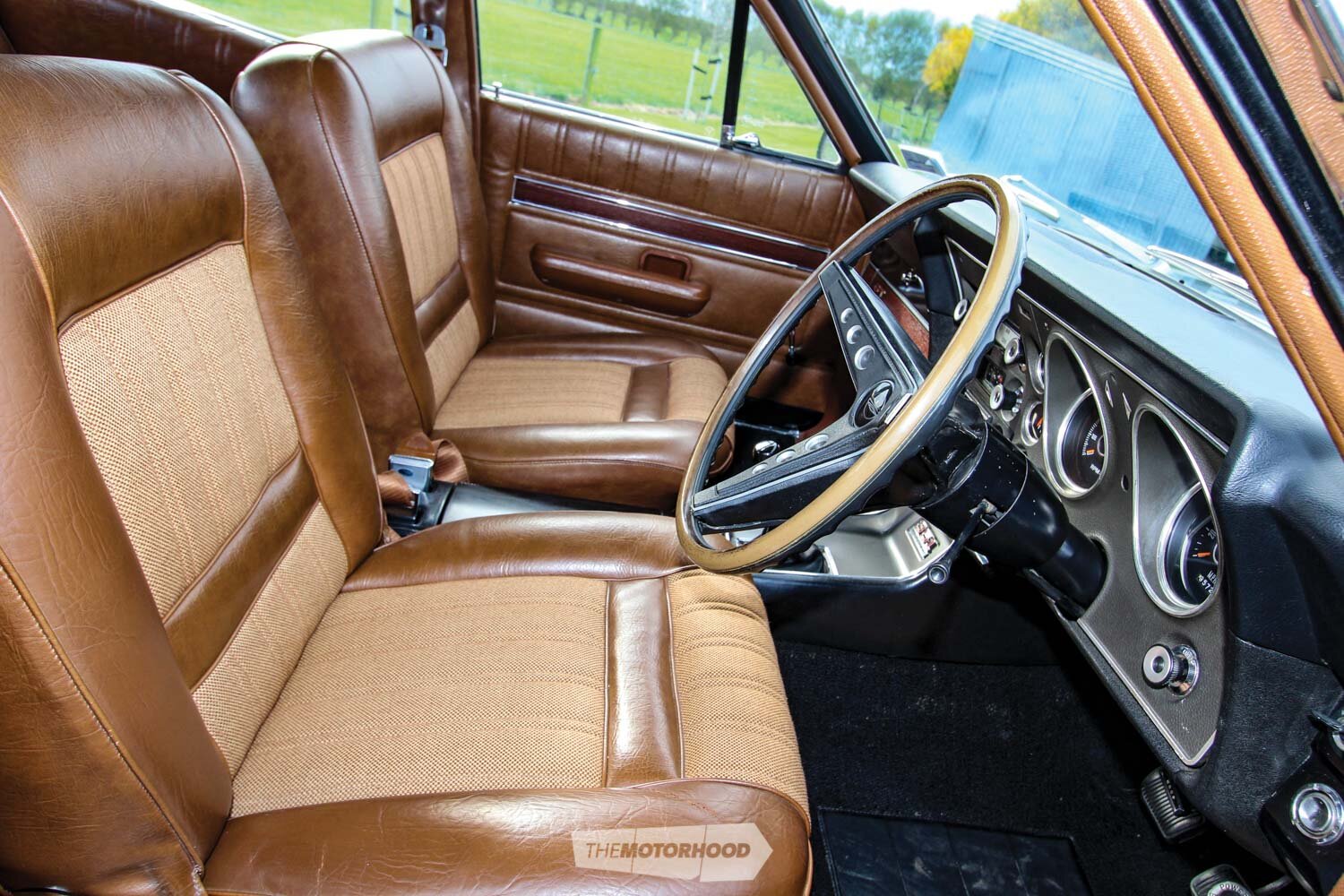
The Phase IV, which showed huge promise for the 1973 season but the public and media outcry about speed saw it replaced by the B52 project: the Ford Falcon Coupe Superbird.
“I didn’t really get a chance to race one or practise. I think it [the Phase IV] would have been a great car! The coupe was a little harder to see out of, but it had great rear grip. I did like driving them, though.”
Ford pulled out of officially supporting race teams and Moffat went on to great success with his own race team.
Ford had achieved what it wanted to do with three wins at Bathurst with the Falcon GTHOs.
A PROUD RECORD
Genuine GTHOs rarely come up for sale. When they do they are probably Australia’s most valuable muscle cars at the moment. Say “HO” to any car enthusiast and they know what you are talking about. The aura has certainly never diminished, and even the GTs do well at auction.
Unique Cars Australia’s survey of 2017–2018 auction results provides interesting reading.
Owners are holding on to the XR GT models, with just two selling at an average of $107,375 in New Zealand dollars. Just five XTs averaged $78,713, six XW GTs averaged $137,182, and 11 XY GTs averaged $156,434. Four XY GT Fairmonts averaged $65,859, and 14 XY GT replicas averaged $78,780. In 2018, Australian cricketing legend Jeff Thomson (Thomo) sold his Phase III GTHO for over $1,000,000. Concours condition cars are going to command a higher price. This feature car, a 1970 Ford Falcon GT, has graced the pages of New Zealand Classic Car before. It arrived in New Zealand in 1973 from Australia, having had a number of owners.
The car was restored here over two years. The work done included adding a set of Globe alloys, new door skins and interior upholstery, as well as repainting it in its original Monza Green colour. The drivetrain was rebuilt to factory specifications.
In 2008, and with only 17,000km on the odometer, the car was put up for auction.
Ford Falcon GT enthusiasts Roger and Diane Whyte of Southland heard about the car. Their bid was successful, and they added a ‘Shaker’ to their growing collection.
“We have the original ownership papers for the car and the Globe alloys. I think it looks better on the Globes,” Roger said.
With only the occasional trip, the kilometres have not been added to greatly.
“We haven’t had to do a thing to it. Just regular servicing and it’s been very reliable. It does drive very nicely.”
Last year, they opened up the collection to visiting car clubs and fellow GT owners. It’s something else!
“Like many who now buy these classics, we hang on to them to pass on to our children. They will benefit from us keeping these cars and looking after them,” Roger said.
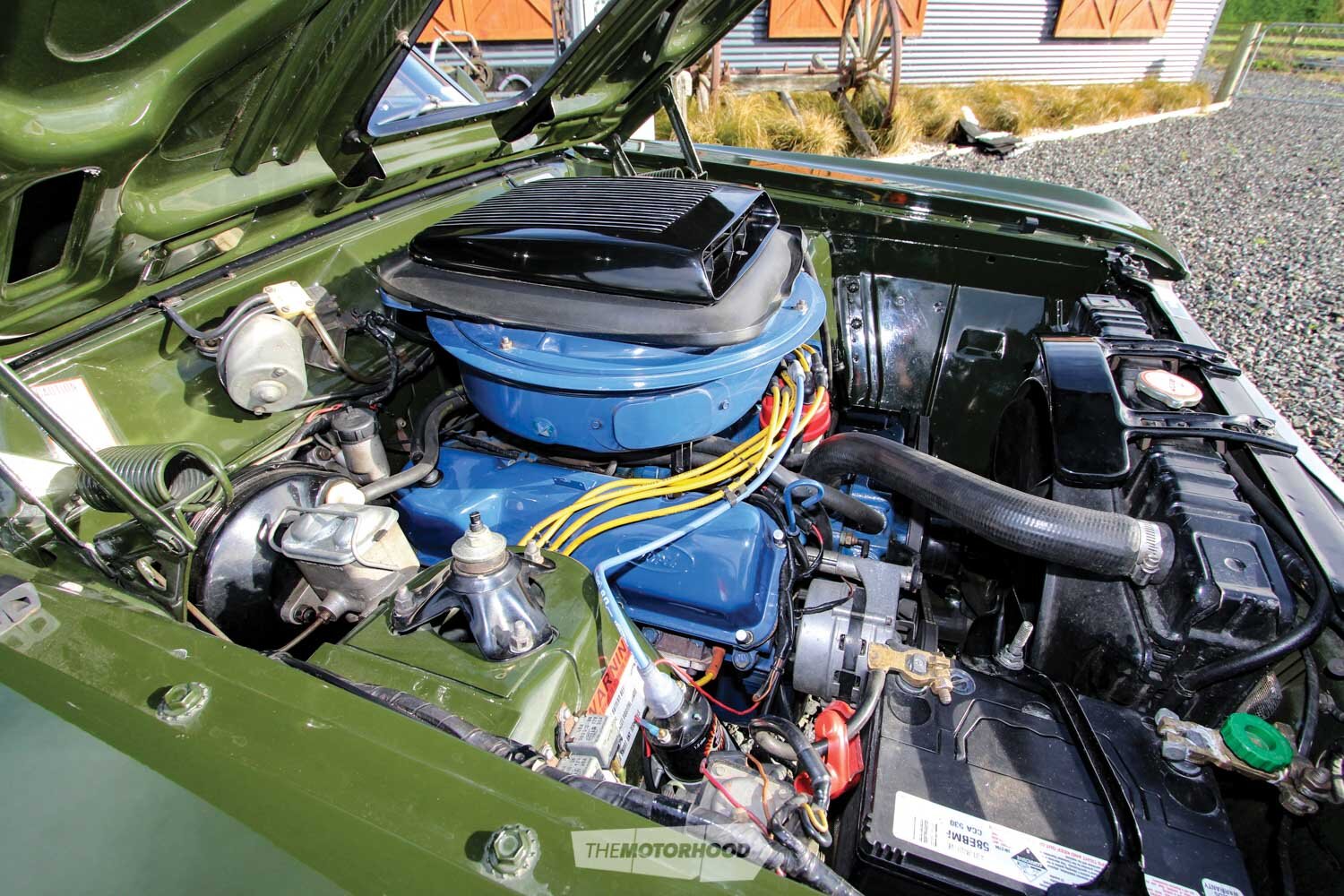
1970 FORD FALCON GT PHASE III
Engine: Cleveland V8
Capacity: 5752cc [351ci]
Bore x stroke: 102 x 89mm
Valves: OHV, two valves per cylinder
C/R: 11.0:1
Max power: 224kW (300hp) @ 5400rpm
Max torque: 515Nm (380lb·ft) @ 3400rpm
Fuel system: Four-barrel 600cfm Autolite carburettor
Transmission: Four-speed manual
Suspension: F/R Coil springs, Hotchkiss drive with leaf springs
Steering: Recirculating ball, optional power assist
Brakes: Disc / drum
DIMENSIONS
O/all length 4689mm
Width 1869mm
Wheelbase 2819mm
Kerb weight: 1524kg
PERFORMANCE
Max speed: 217kph
0–100kph: 6.4 seconds
Standing ¼ mile: 14.2 seconds
PRODUCTION
Years produced: 1970–1972
Numbers produced: 118,666



